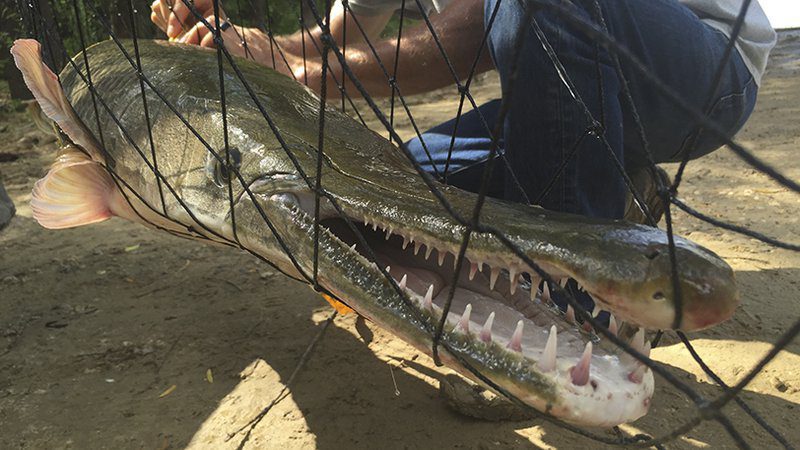17 Jul 2018 AGFC focusing on alligator gar
The Arkansas Game and Fish Commission is asking anglers and bowfishing enthusiasts to help bring back one of Arkansas’s oldest trophy angling opportunities – the alligator gar.
To help conserve existing populations of alligator gar, the AGFC created a statewide bag limit of one per day under 36 inches long. Any gar longer than 36 inches must be immediately released. Anyone keeping a small alligator gar also must have an alligator gar harvest permit, which is available as a free added code to their fishing license through the AGFC’s licensing site.
To offer anglers an opportunity to keep their trophy-class fish, however, a limited number of Trophy Alligator Gar Harvest tags have been issued for anglers interested in keeping alligator gar longer than 36 inches. The tag is good for one alligator gar longer than 36 inches per year.
Tags were issued to anglers through random draw in February.
“Every angler who had a valid alligator gar permit in January was automatically entered into the free draw,” said Eric Brinkman, AGFC fisheries supervisor in Hope. “One hundred tags were issued randomly to these anglers. We plan to continue this method of drawing next year as well, based on angler input.”

Permit holders who harvest a trophy alligator gar must contact the AGFC at 800.482.9262 to check the animal. Biologists will then meet the angler at the lake to attach a transportation tag and gather biological information critical to the AGFC’s efforts in rebuilding populations of these large trophy fish.
Last year, the AGFC also reclassified alligator gar strictly as a sportfish. Until then, it had lived under the heading of “rough fish” and then as a “commercial/sportfish.”
According to AGFC fisheries biologists, only Texas, Louisiana and Mississippi allow commercial fishing for the species. Remaining populations in Arkansas are spread thinly across much of the state or have been eliminated. Two of the known remaining populations of alligator gar in Arkansas may total only 300 individual fish each. While other pockets known to exist, none are documented to be any larger.
“Gar take a very long time to reach sexual maturity,” said Brinkman. “Females may be 14 years old before they can successfully spawn. And the spawning habitat they need consists of areas created by spring floods, which are hit-and-miss, much more so with the creation of dams blocking access and regulating flow rates.”
Recent surveys with alligator gar permit holders indicate a small number of anglers still target alligator gar with hook and line, but bowfishing is the most common method of taking the species. “About 20 percent of gar permit holders say they target the species with a rod and reel,” Brinkman said. “Close to 70 percent are using bowfishing tackle. Much of the rest are incidental catches from anglers pursuing catfish or other species.”
If an angler catches a trophy-class gar but does not have a permit, Brinkman asks that they handle the fish carefully, take a few photos and get it back to the water quickly.
“They’re pretty hardy fish, but you can kill them if you’re not careful,” Brinkman said. “Even though they have a primitive lung that allows them to gulp air and survive briefly out of water, they can still suffocate if you don’t let them open and close their mouth freely. And keeping them out of water long enough that they begin to lose their moisture can hurt them just as it does with any fish.”








